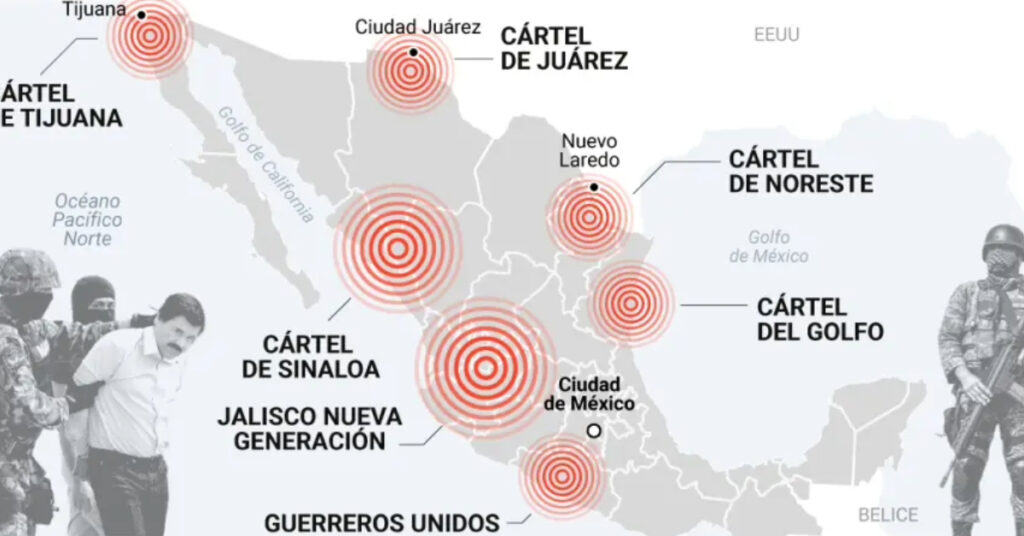In a significant breakthrough, Ismael ‘El Mayo’ Zambada, the elusive leader and co-founder of the Sinaloa cartel, was apprehended by United States authorities at an airfield in Texas on Thursday. The arrest marks a pivotal moment in the decades-long pursuit of one of the world’s most notorious drug traffickers. Alongside Zambada, Joaquín Guzmán López, a son of the infamous Joaquín ‘El Chapo’ Guzmán, was also detained.
Zambada, a founding figure of the Sinaloa cartel, has been a central figure in the global drug trade. His low-profile lifestyle and strategic elusiveness have allowed him to evade capture for years, despite being a top target for US authorities, who had recently increased the reward for his capture from $5 million to $15 million.
The Sinaloa cartel, under Zambada’s leadership, has established itself as a dominant force in drug trafficking, extending its influence across Mexico and globally. The cartel’s operations span several regions in Mexico, particularly along the Pacific coast, and it maintains a significant presence along the US-Mexico border. This international reach underscores its operational capacity and extensive network for trafficking heroin, cocaine, methamphetamines, fentanyl, and marijuana.
Following ‘El Chapo’ Guzmán’s arrest, Zambada emerged as the most senior leader of the cartel. The organization’s ability to maintain its extensive trafficking operations even after ‘El Chapo’s’ capture highlights its robust structure. The Sinaloa cartel’s influence is deeply entrenched, with operational centers in key US states, including California, Arizona, New Mexico, and Texas, facilitating the distribution of drugs throughout the United States.
In the wake of Zambada’s arrest, the Sinaloa cartel’s leadership, which had functioned as a coalition of four factions, faces a significant disruption. The four main leaders included Zambada, Aurelio Guzmán (brother of ‘El Chapo’), Rafael Caro-Quintero (a historical figure in the Mexican drug trade), and the ‘Chapitos’ (the sons of ‘El Chapo’). With Zambada and Joaquín Guzmán López now in custody, the cartel’s future direction remains uncertain.
The cartel’s formidable presence in Mexico is reflected in its control over 15 of the country’s 32 states and nearly the entire US-Mexico border. Its origins trace back to its successful consolidation of territories previously dominated by rival Juarez and Tijuana cartels. From the Golden Triangle region—encompassing Sinaloa, Durango, and Chihuahua—the cartel has orchestrated a vast and lucrative drug trafficking network.
The staggering scale of organized crime in Mexico is evident from a 2023 study published in the journal Science, estimating that drug cartels employ around 175,000 individuals, making them the fifth largest employer in the country. The escalating violence associated with these criminal organizations has had a profound impact on Mexico’s homicide rates, with the government reporting 34,000 victims in 2021, translating to nearly 27 victims per 100,000 inhabitants.
The Jalisco New Generation Cartel (CJNG) has emerged as the primary rival to the Sinaloa cartel. Founded in 2007 and led by Nemesio Oseguera Cervantes, alias ‘El Mencho,’ the CJNG has rapidly expanded its influence, becoming one of Mexico’s most dangerous criminal groups. Their aggressive push for territorial control has sparked violent conflicts with the Sinaloa cartel, contributing to the country’s high homicide rates.
In recent years, the CJNG has formed strategic alliances, such as with the Tijuana Cartel, creating the Tijuana New Generation Cartel (CTNG) to regain control over key drug trafficking routes. The intense rivalry between CJNG and the Sinaloa cartel has resulted in significant bloodshed, with over 500 lives lost in 2017 alone due to clashes between these groups.
Other notable criminal organizations in Mexico include the Northeast Cartel, a splinter group from Los Zetas, which maintains control over Nuevo Laredo and operates in multiple states, as well as internationally. The Tijuana Cartel, despite being weakened by the capture of its leaders, remains active in the northern region of Mexico. The Juarez Cartel, based in Ciudad Juárez, has seen a decline since the death of its leader Amado Carrillo Fuentes but continues to operate under the name New Juarez Cartel.
The Gulf Cartel, historically significant in Tamaulipas, is currently fragmented into various factions, while the United Warriors Cartel, a derivative of the Beltrán Leyva Cartel and La Familia Michoacana, operates primarily in Morelos and Guerrero.
The arrests of Ismael ‘El Mayo’ Zambada and Joaquín Guzmán López represent a significant blow to the Sinaloa cartel and a major victory for US and Mexican authorities in their ongoing battle against organized crime. The impact of these arrests on the cartel’s operations and the broader landscape of drug trafficking in Mexico will unfold in the coming months as law enforcement agencies continue their efforts to dismantle these powerful criminal networks.
